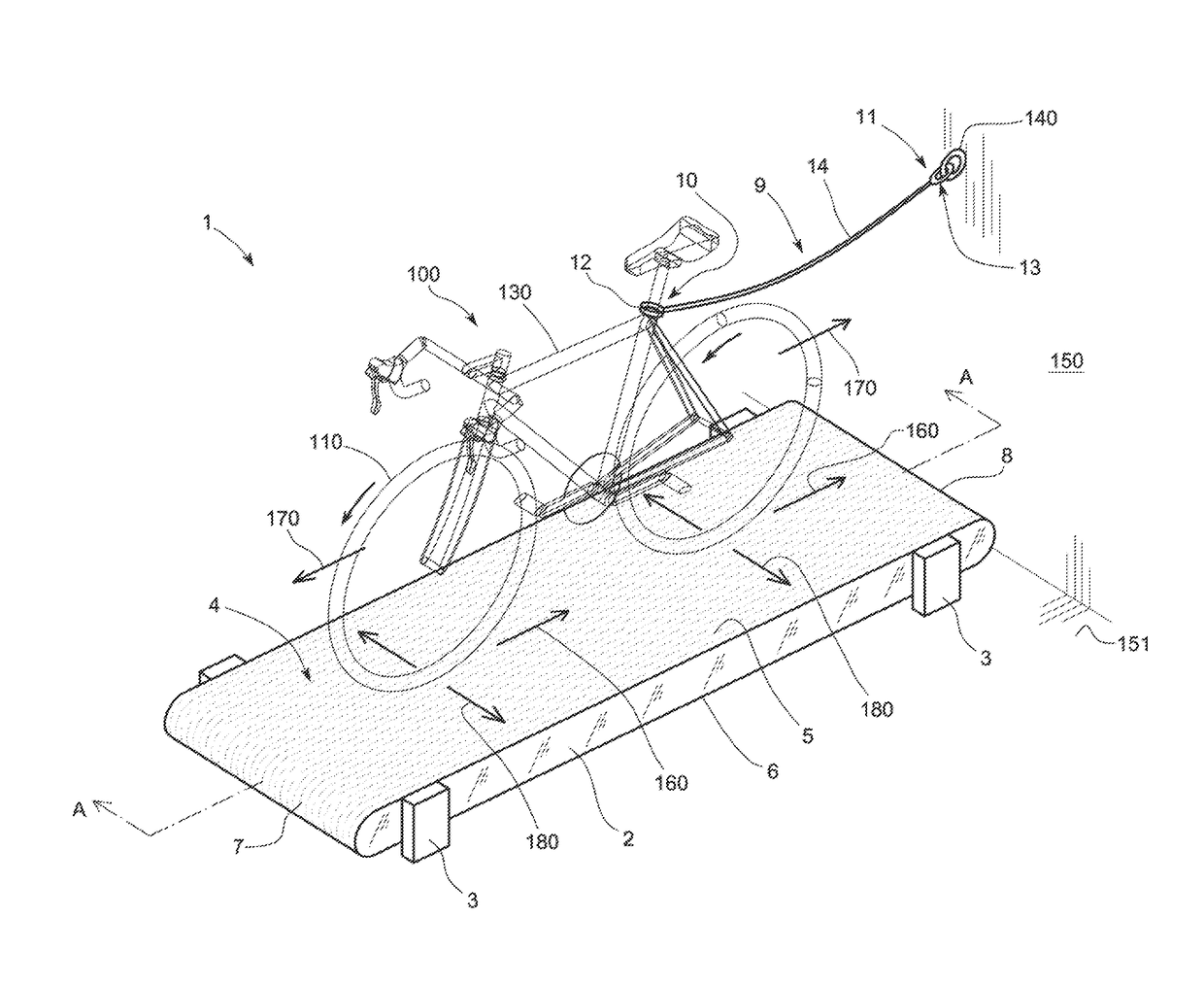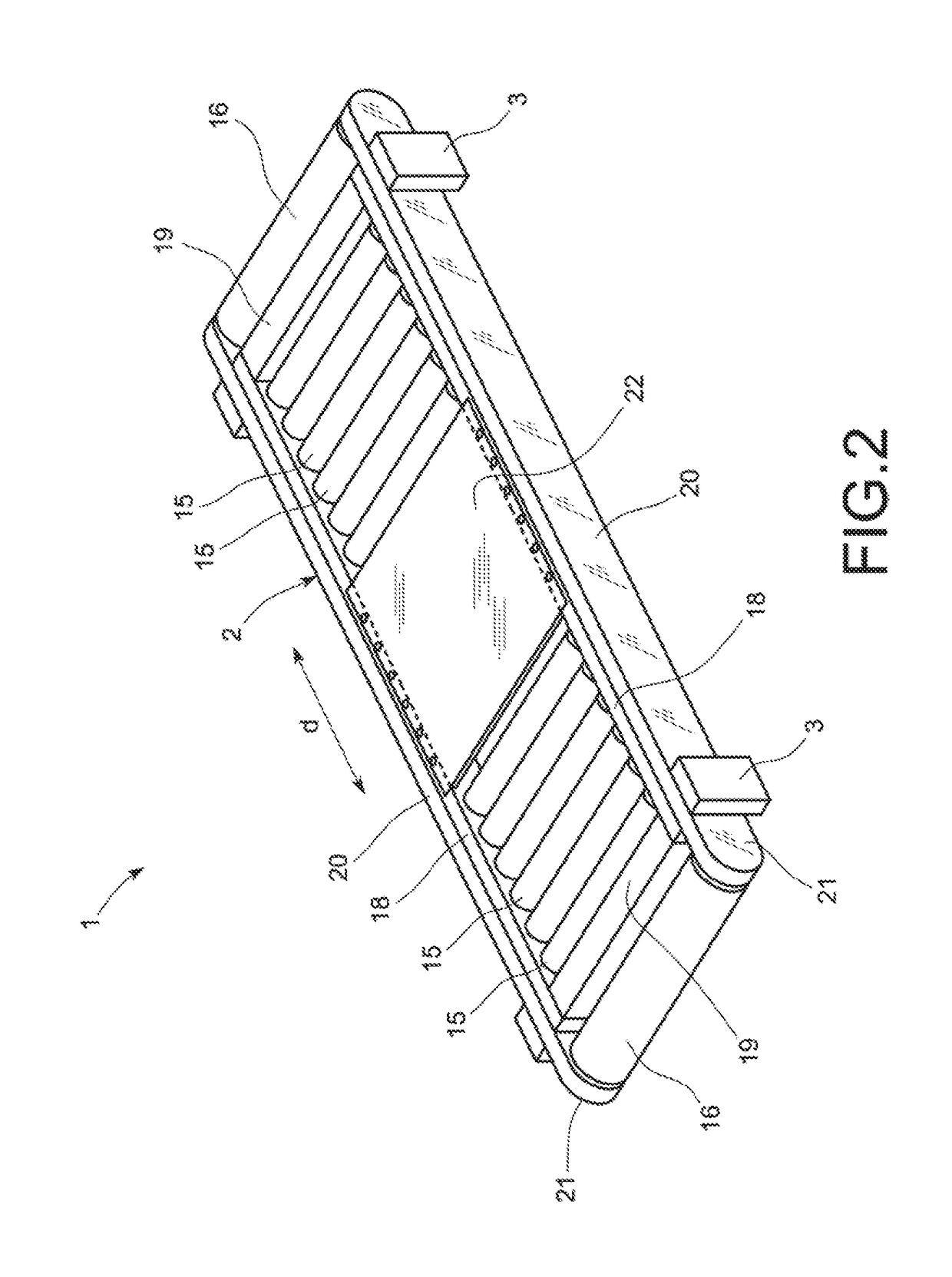Cycling training apparatus with stationary movement
- Summary
- Abstract
- Description
- Claims
- Application Information
AI Technical Summary
Benefits of technology
Problems solved by technology
Method used
Image
Examples
first embodiment
[0023]The illustration in FIG. 1 shows the invention, consisting in a cycling training apparatus (1) comprising a structure (2) that is supported on the floor (151) via legs (3). The legs (3) enable the structure (2) to be supported at a certain distance from the floor (151). The structure (2) may be made out of aluminium, for example, although the use of other materials is also contemplated. The apparatus also includes a belt (4), arranged in a longitudinal closed loop that revolves around the structure (2). The closed loop formed by the belt (4) comprises an upper face (5), a lower face (6) and two longitudinal end sides (7, 8). The upper face (5) of the loop constitutes a support surface for the wheels (110, 120) of a bicycle (100). The upper face (5) is preferably horizontal, as shown in the figure, although other embodiments are contemplated.
[0024]The apparatus (1) as per the invention also comprises a securing element (9) fitted with two opposite ends (10, 11). The securing el...
second embodiment
[0035]FIGS. 5 and 6 show the invention, which as the previous embodiment consists in a training apparatus (1) comprising a structure (2) that is supported on the floor (151), a series of rollers (15, 16) placed transversally and articulately connected to the structure (2) and capable of turning with respect to this structure (2), and a belt (4) arranged in a closed loop, which travels over and under the rollers (15, 16), whereby this loop comprises an upper face (5) to support a bicycle (100). The apparatus (1) also comprises a securing element (29) that presents two opposite ends (30, 31), whereby one end (30) has a first connector (32) attached to a frame (130) of a bicycle (100), and the opposite end (31) has a second connector (33). The securing element (29) is flexible so that the distance (D) between these ends (30, 31) is variable. Furthermore, as in the previous embodiment, the rollers (15, 16) rotate driven solely by a friction force between the belt (4) and the rollers (15...
PUM
 Login to View More
Login to View More Abstract
Description
Claims
Application Information
 Login to View More
Login to View More - R&D
- Intellectual Property
- Life Sciences
- Materials
- Tech Scout
- Unparalleled Data Quality
- Higher Quality Content
- 60% Fewer Hallucinations
Browse by: Latest US Patents, China's latest patents, Technical Efficacy Thesaurus, Application Domain, Technology Topic, Popular Technical Reports.
© 2025 PatSnap. All rights reserved.Legal|Privacy policy|Modern Slavery Act Transparency Statement|Sitemap|About US| Contact US: help@patsnap.com



